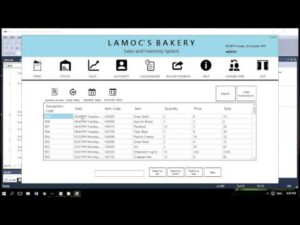No products added!

For this, we have a detailed guide on how to set up the products and service list in QuickBooks Online. When you immediately receive a cash or a check for a sales transaction without having created an invoice, then you must use the Sales receipt form to record the check and revenue. By default, QuickBooks puts sales receipt payments into the Undeposited Funds account. All you have to do is create a sales receipt and QuickBooks handles the rest.
Your projects are processes,
- It is important to ensure that all payments received from customers are deposited into the company’s bank account.
- Then, cross-referencing this information with the actual bank deposits helps to identify any discrepancies in the records.
- One common mistake in reconciling undeposited funds is the omission of recording all deposits in the undeposited funds account, leading to discrepancies between the recorded transactions and actual bank deposits.
- It will take you to the bank deposit screen where you can uncheck the checkbox for the payment you wish to remove, and then click Save and close.
- Any discrepancies need to be meticulously investigated and resolved to ensure the bank statement and the recorded transactions are in perfect alignment.
- Also, be sure you are posting the deposit to the correct account — in this case, checking — and that the date on the transaction is the date you will take the deposit to the bank.
For example, let’s say Willie’s Widgets paid you $300, Wally’s Whatsits paid you $750 and Whitley’s Whosits paid you $200. However, you need to properly credit each customer for their payment. Posting each payment to the Undeposited Funds account and then recording the deposit in QuickBooks Online allows you to do this. In simpler terms, it’s a holding account for the money you have received and intend to deposit, but you haven’t deposited yet. This is different from petty cash or your cash register till, which is cash you have on hand but don’t intend to deposit.
Deleting a Bank Deposit
However, the payment will not clear your bank until Jan. 2 of the next year, at the earliest. Another way to skip the tedious process is by accepting credit cards or another online payment option such as ACH. Doing so allows you to skip the longer workflow because each transaction gets processed as a single transaction, meaning there’s not a chance for it to show up as a lump sum payment on your bank statement. Both the Undeposited Funds and Petty Cash accounts are used to additional accounting student resources record cash related transactions. However, the Petty Cash account is used exclusively to record daily expenses or income from business operations.
What to Do if You Encounter Unreconciled Transactions in Undeposited Funds Account?
The technical accounting of the record deposits function is credit undeposited funds and debit cash or checking. This can have a significant impact on a small business’s ability to track and manage its cash flow accurately. Not recording all deposits can lead to an imbalance between the actual and reported funds, affecting financial statements. Duplicating deposit entries can result in overstated revenues, leading to incorrect financial metrics and potential compliance issues.
Small businesses can greatly benefit from the visibility and control over their lease definition common types of leases examples cash inflows that regular reconciliation offers, contributing to their long-term financial stability. Taking prompt action to rectify these discrepancies is essential to maintain financial integrity and ensure a clear and accurate representation of the company’s financial status. Otherwise, you run the risk of either understating or overstating your income, both of which will have tax implications. Here’s what you need to know about QuickBooks Online’s Undeposited Funds account to keep your business accounting operations running smoothly. You just learned how to use the Undeposited Funds account in QuickBooks Online, its importance, and when to use it.
Recording deposits twice in the undeposited funds account is another common mistake that can lead to inaccuracies in financial records and reconciliation. This error may result in overestimation of funds and misalignment with actual bank deposits. It is crucial to review each transaction meticulously, comparing the bank deposit entries with those recorded in the undeposited funds account. Any discrepancies need to be meticulously investigated and resolved to ensure the bank statement and the recorded transactions are in perfect alignment. If you follow the technical financial accounting you will see the end result is that Income or Sales has been credited and Cash or Checking has been debited. Both accounts receivable and undeposited funds accounts were used but came out with a $0.00 balance in the end.

Step 2: Compare Undeposited Funds to Bank Deposits
It’s good to periodically check your Undeposited Funds account and clear out any payments waiting to be moved. If you process invoice payments through QuickBooks Payments for Desktop, QuickBooks takes care of everything for you. Here’s how to put payments into your Undeposited Funds account before you combine them. Again, make sure you are selecting Undeposited Funds from the “Deposit To” drop-down menu, and save the transaction.
Continue entering payments received from your customers until all payments have been entered. Make sure you select Undeposited Funds from the “Deposit To” drop-down menu, then save the transaction. From the Sales receipt form, you’ll need to provide the requested details. Suppose we recently received an upfront payment of $150 in cash from Robert Allard for an A/C repair service. Once google gmail and trainerize integrations done, click Save and close, and your received payment will automatically be reflected in the Undeposited Funds account.
As you can see in the image above, QuickBooks Online instructs you to use the Cash On Hand account instead of the Undeposited Funds account for petty cash. QuickBooks Online has a special account specifically for these funds in transit. Unfortunately, the Undeposited Funds account in QuickBooks Online is one of the most misunderstood accounts — and one of the accounts most likely to cause a business’s financial statements to be incorrect. No, the Undeposited Funds account itself doesn’t need to be reconciled.
